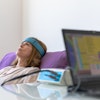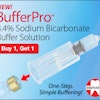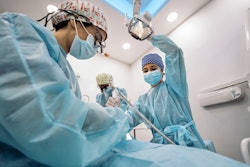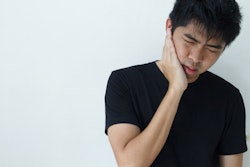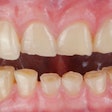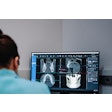Pain resulting from temporomandibular disorders (TMDs) or teeth grinding should be addressed before clear aligner treatment, according to research published in Seminars in Orthodontics. Patients should also be informed about possible side effects, including temporary bite changes and muscle soreness, from aligners.
Blending personalized care, clear communication, and a bruxism/TMD management plan, clinicians may achieve successful orthodontic results, the authors wrote.
“Treating patients with TMD and/or bruxism with clear aligners is a collaborative, carefully planned endeavor,” wrote the authors, led by Rosaria Bucci of the University of Naples Federico II in Italy (Semin Orthod, September 7, 2025).
As clear aligner therapy becomes more common, many orthodontic patients have bruxism or TMDs. While aligners do not cure these conditions, they are not contraindicated for patients with bruxism. Bruxism’s occlusal forces can affect aligner tracking, but slower tooth movement, smaller increments, and composite attachments on worn teeth can help maintain aligner retention, the authors wrote.
Wearing aligners may cushion the teeth from excessive forces, but patients should be advised that aligners are not as durable as a hard acrylic splint and may become damaged from clenching or grinding. Though aligners may briefly alter jaw muscle activity, it typically returns to normal as patients adjust, which patients should be informed about, the team reported.
A comprehensive biopsychosocial approach may support successful clear aligner therapy for patients with bruxism or TMD without compromising results. Clinicians should first assess bruxism and TMD using standardized tools, addressing any pain before treatment. Patients should also understand that temporary bite changes, muscle responses, or mild discomfort may occur, they wrote.
Also, patients should be informed that heavy grinding can occasionally crack an aligner and that they should report this promptly to the orthodontist. During treatment, clinicians should monitor TMD and bruxism symptoms and evaluate any new reported pain. If significant symptoms develop, management may include self-care strategies and a temporary pause or adjustment in orthodontic forces.
But for patients with severe bruxism, a thicker or tougher aligner may help resist wear and spread the biting forces, though further research is needed to evaluate its effectiveness, the authors added.
“The goal is a well-aligned dentition that is functionally comfortable for the patient, coupled with a management plan for their bruxism/TMD that extends beyond the orthodontic treatment itself -- embodying a truly comprehensive care strategy,” they concluded.


